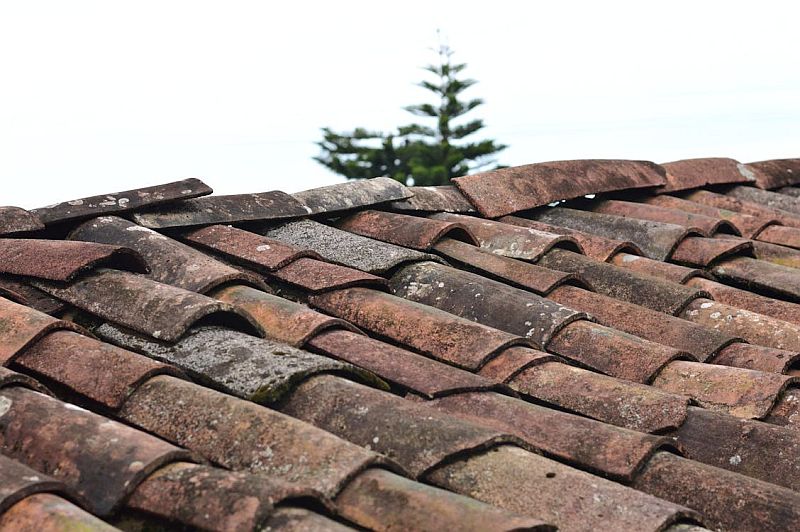Roofing projects are essential for maintaining and improving our home’s structural integrity and aesthetic appeal. However, the environmental impact of these projects often goes unnoticed. Roofing waste, which includes materials like shingles, tiles, and insulation, can significantly affect the environment if not managed properly.
The sheer volume of waste generated by roofing projects is staggering, contributing to landfill overflow, pollution, and the depletion of natural resources. To address these concerns, it is crucial to explore practical strategies for mitigating the environmental impact of roofing waste. One such approach involves utilizing roofing roll off dumpster services, which can significantly streamline the waste management process.
The Environmental Impact of Roofing Waste
There are several issues associated with waste from roofing contracts. Old roofing materials are torn out and thrown away, leaving them to contribute to the clutter in a landfill. The EPA estimates that construction and demolition waste, including roofing material, constitute approximately 24% of the total landfill waste in the nation. This is expensive in terms of the amount of landfill space used, which results in pollution and emission of greenhouse gases as the materials biodegrade.
Some common roofing materials, like asphalt shingles, are also hazardous as they contain chemicals that might be released into the soil and water sources and are dangerous to the human body. The manufacturing of new roofing materials is also costly to the environment through the extraction of raw materials, energy use in processing the materials, and emissions resulting from the transportation of the roofs to the various construction sites.
Proper Waste Segregation and Recycling
Proper segregation and recycling of roofing waste are among the best approaches that can be employed to minimize the effects of the waste on the environment. This way, different roofing materials, including asphalt shingles, metal, and wood, can be sorted out and processed at proper recycling centers for their respective types. For instance, after they have reached the end of their useful life, asphalt shingles can be recycled for the production of new shingles or used in the construction of roads without the need to use raw materials again.
Some benefits of recycling roofing materials include saving landfill space: Recycling roofing materials means that the materials are not dumped into landfills, saving space in the limited landfill spaces available today. Reducing the use of virgin materials: Recycling roofing materials means there will be less demand for new roofing materials, saving the environment from bearing the social cost of producing those materials. Contractors and homeowners should engage reliable contractors specializing in roof installation, be more concerned with the roofing recycling programs, and include a list of recycling facilities.
Utilizing Roofing Roll-Off Dumpster Services
Another efficient approach to roofing waste management is to employ roofing roll-off dumpster services. These services offer dumpsters specially made to be easily transported to the job site and easily transported to different dumping sites to dispose of roofing debris. Through roll-off dumpsters, roofing contractors can handle wastes effectively, avoiding the chaos that could come with waste and transporting such wastes to recycling facilities or disposal sites.
Roofing roll-off dumpster services also play a major role in reducing environmental effects because they cut down on the number of trips to the dump site. This leads to reduced fuel use and, therefore, reduces pollution, thus making their carbon footprint small. Also, these services have specific procedures for sorting and removing recyclable material for recycling, adding to the effectiveness of their services on the environment.
Choosing Sustainable Roofing Materials
It is also important to note that an appropriate choice of roofing material can greatly diminish the negative influence of roofing projects on the environment. Green materials include metal roofs, clay tiles, shingles made from recycled material, and many others. They have a long life cycle and are recyclable. Some examples include metal roofs, which have a longevity of 50 years or more and are 100% recyclable, hence being environmentally friendly to homeowners.
Clay tiles are another type of sustainable roofing material. They are naturally occurring and have a long service life; thus, they only require replacing occasionally. Post-consumer and post-industrial waste are used to produce recycled shingles that can be termed more environmentally friendly than asphalt shingles. In addition, using sustainable roofing materials means that there will be limited waste generation, and the demand for new products will also be minimized to have an environmental effect.
Implementing Proper Roof Maintenance
This is one reason why maintaining existing roofs can also go a long way in minimizing the amount of roofing waste produced. Routine checkups and early signs of damage can be corrected, avoiding early roof replacement and minimizing the amount of waste produced.
Residents should ensure that they conduct seasonal checks on the roofs to find possible problems like leakage, worn-out shingles, and defective structures. These may include the unnecessary use of raw materials during roofing construction and the disposal of old roof materials that would otherwise have been avoided by proper roof maintenance.
Furthermore, if repairs are required, they should be carried out effectively by using quality materials and hiring competent contractors for the work. This approach decreases the number of repair activities carried out on the roof and means less production of roofing waste in the long run.
Conclusion
Roofing wastes are one of the main issues that have raised eyebrows concerning their environmental effects and thus deserve attention. Proper waste disposal and management for roofing projects, the use of roofing roll-off dumpster services, proper selection of roofing materials, and conservation of existing roofs could minimize many of the impacts on the environment.
Article Submitted By Community Writer




